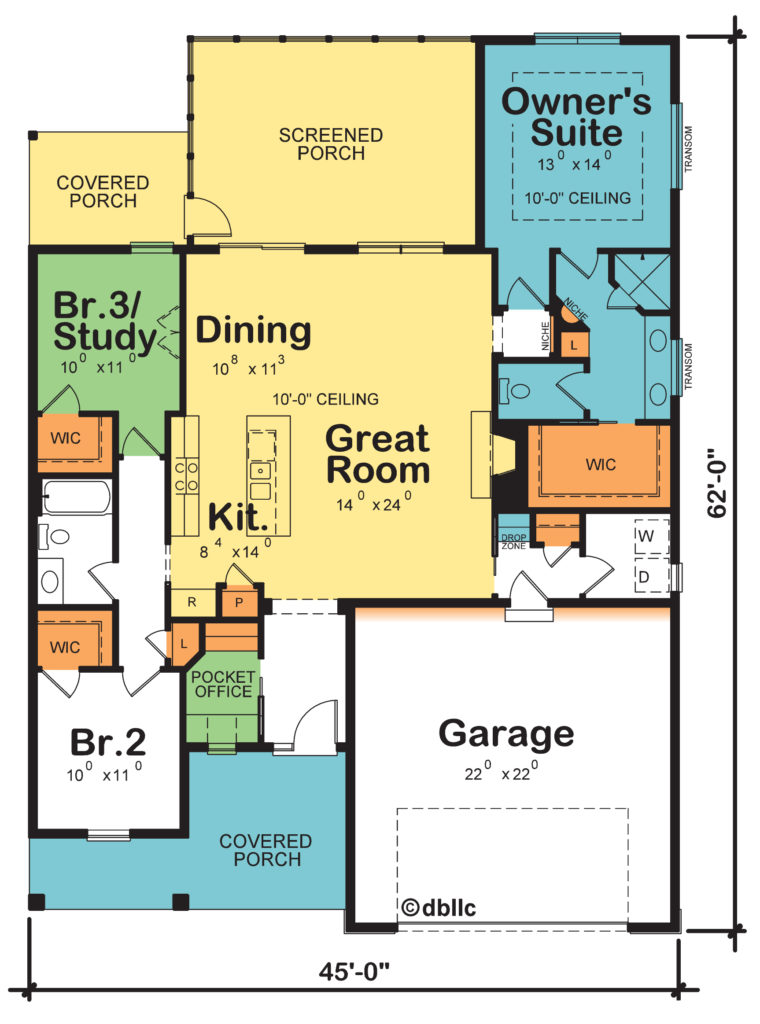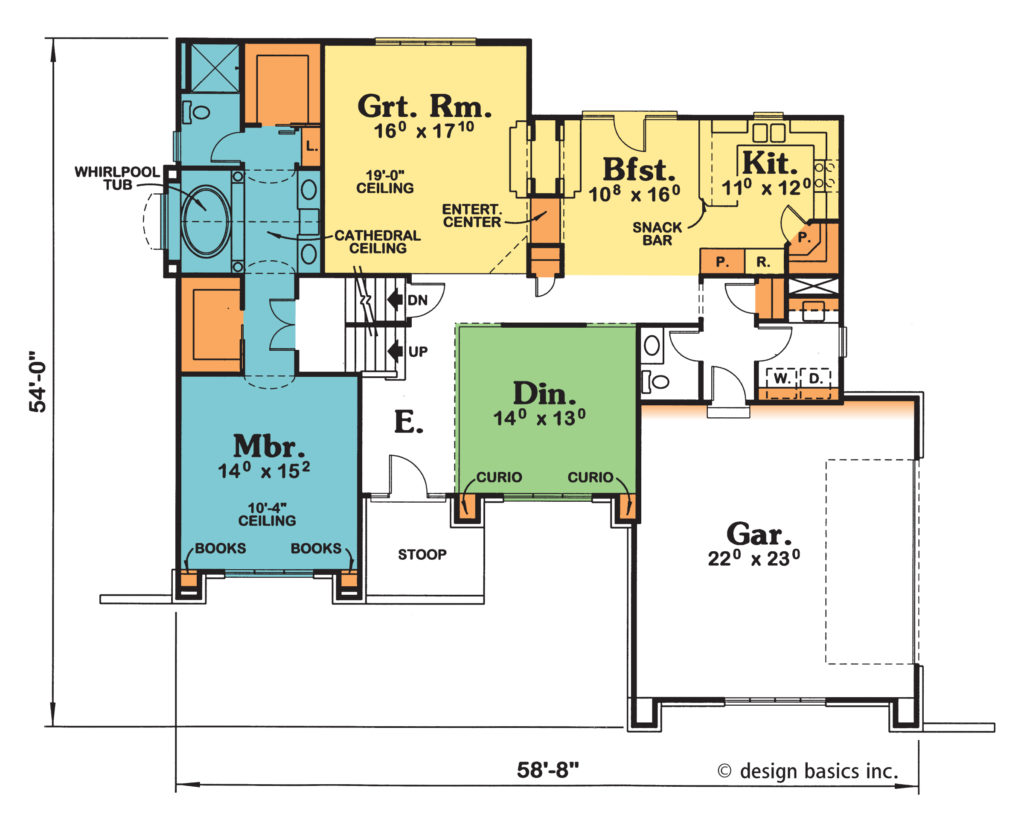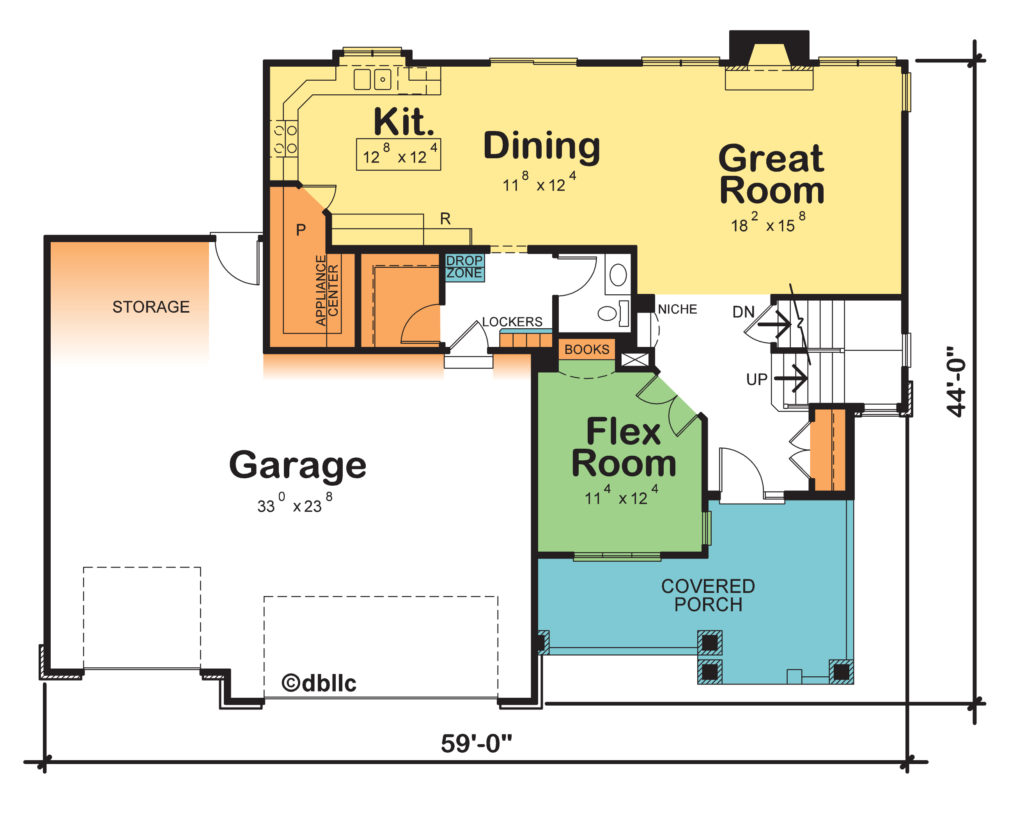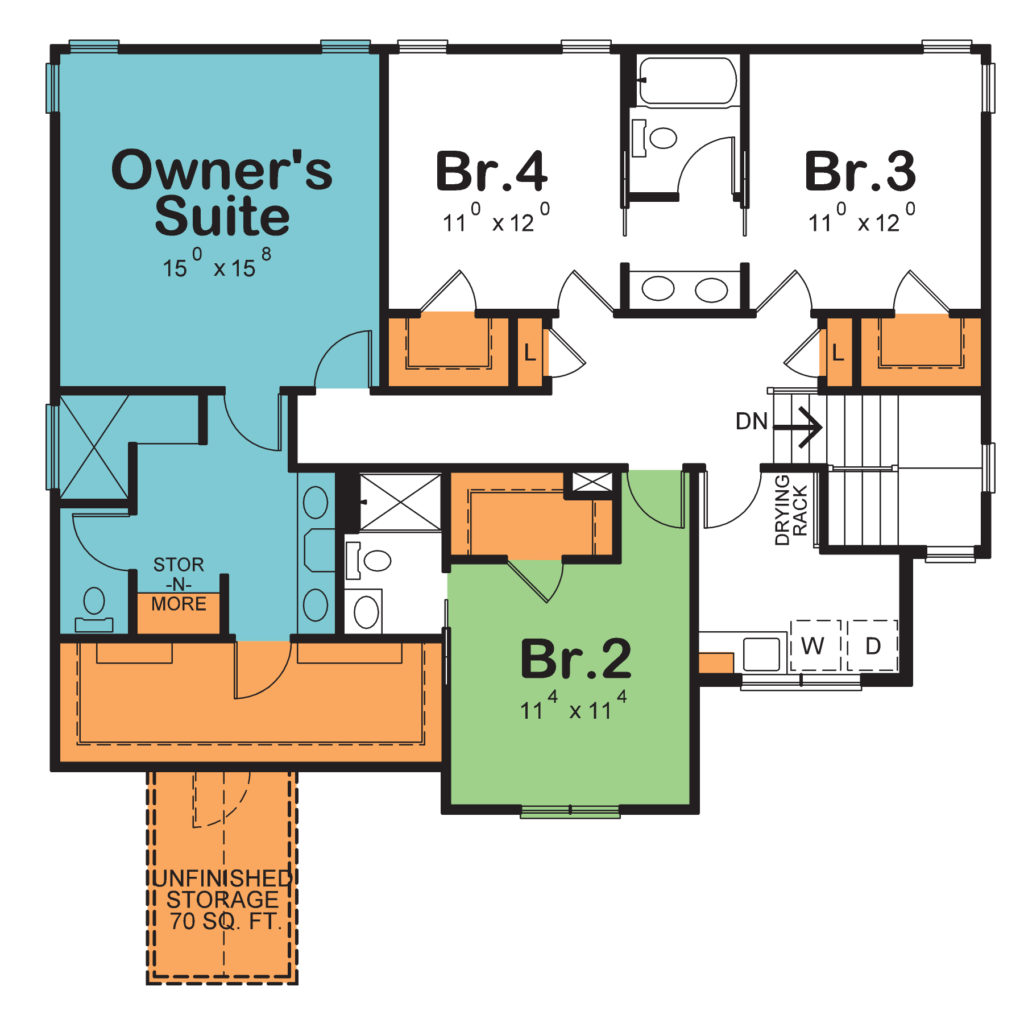Shhh... someone might be sleeping.
Accessing the Cabot Terrace’s (plan #42423) generous walk-in closet directly from the bathroom means fewer interruptions if the two of you have different sleep schedules. And the door to the bathroom being next to the door in and out of your suite means less disturbance when leaving early.
Yes, the design of your suite has numerous implications when it comes to peace and quiet. Where your suite is positioned in relation to other rooms, especially bedrooms, matters. The Cabot Terrace showcases the popularity of “split-bedroom” layouts, wherein your suite is well-separated from secondary bedrooms for maximum privacy at night. But the Cabot Terrace’s suite bedroom doesn’t share a wall with any public spaces inside the home, delivering true tranquility.
Which “floor” of your home your suite is located on has further significance. In a two-story home, not having living space over your bedroom will help with noise. Conversely, if your bedroom is on the second floor, what space(s) are beneath it? (You might not want your bedroom directly above your media room!)
Or consider the option of a “mid-level” suite such as that found in the Hanna (plan #4081). Ascending one-half flight of stairs brings you to the landing where double doors lead to your suite that’s on its own level! First and second floor noises tend to be less problematic for layouts with mid-level suites.
Popular for keeping everyone together and for their feeling of spaciousness, open floorplans do present challenges when it comes to sound control. Sound waves bounce back and forth against hard surfaces (flooring, walls, windows, ceilings). Noise also echoes in tall ceilings. Design Basics’ lead designer Carl Cuozzo notes that even in big custom homes he’s designing today, buyers are opting for 10- and 11-foot high ceilings rather than cathedral and 2-story high spaces.
According to Cuozzo, “You still get the drama and taller doors and windows without so much echo and energy loss.”
Focus on solutions that help control sound in such spaces – floor coverings such as carpet and pad or Luxury Vinyl Plank (LVP), upholstered furniture, and drapes (as opposed to blinds) for window coverings.
As with bedrooms, the location of your home office (or area when your kids will be remote learning) is important. Up front near the entry may be convenient, but what about street noise? An adjoining bathroom is great, until clients and colleagues get to listen to the toilet flushing. If the laundry room is next to your office/learning center, will that restrict when you run the laundry? Locating the home office away from frequently used areas of the home or loud areas such as a media room is important. And, as described with the Hanna, there are designs such as the Manning (plan #2207) with mid-level dens accessed off staircase landings! Read more about home office design considerations in Take the Stress Out of Working from Home.
The Sunflower Creek (plan #42371) has the sink and dishwasher against the rear exterior wall; the big TV will likely go against the exterior wall of the Great Room; and upstairs, the washer and dryer set against an exterior wall to the front – all choice locations for reducing noise in your home.
When considering home design, listen for how your home will live. What adjoins your bedroom? Your office? Our desire for serenity has lowered volume ceilings. Noise-making appliances and your media entertaining – where are those located? Know also that once you’ve identified the home design that works best for you, our Customized Home Plan designers can help you with any desired plan changes to achieve the peace and quiet you seek.
Be sure to catch the next blog post in this series on how quiet products complete a quiet home.
For more resources on thoughtful design and products:
- View other articles on our blog
- Browse our Her Home™ Magazine
- Thoughtful Design Concepts




